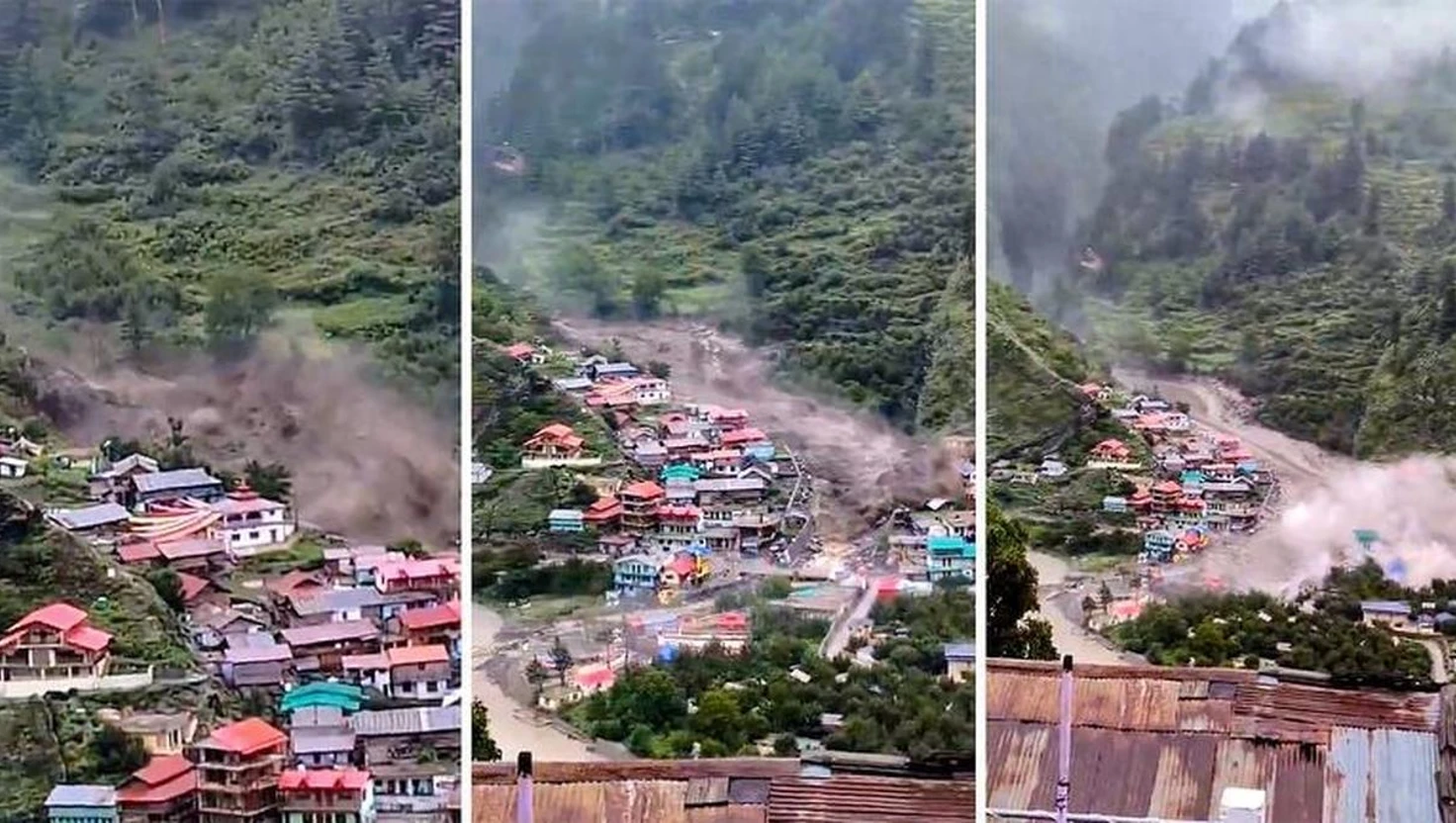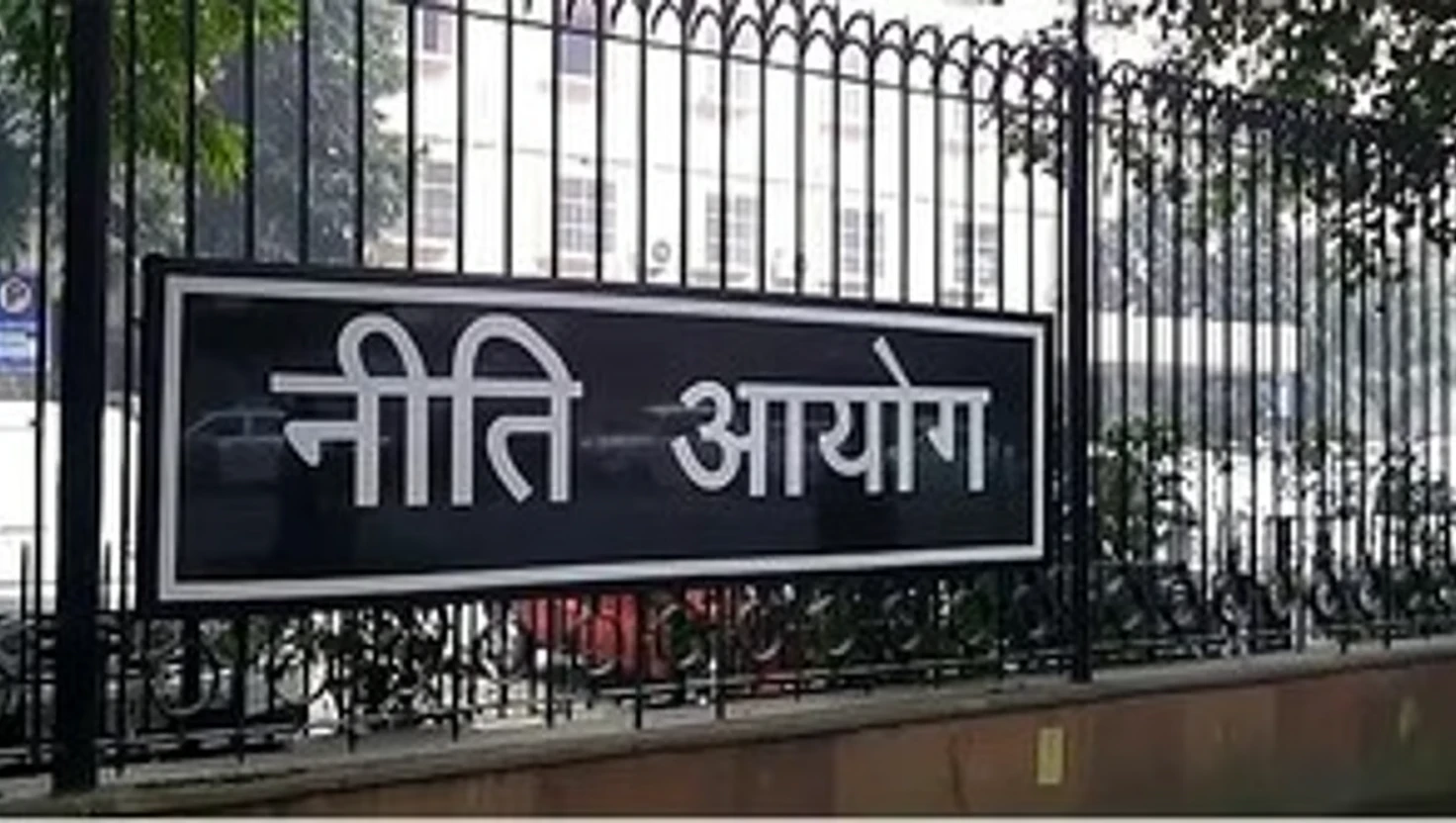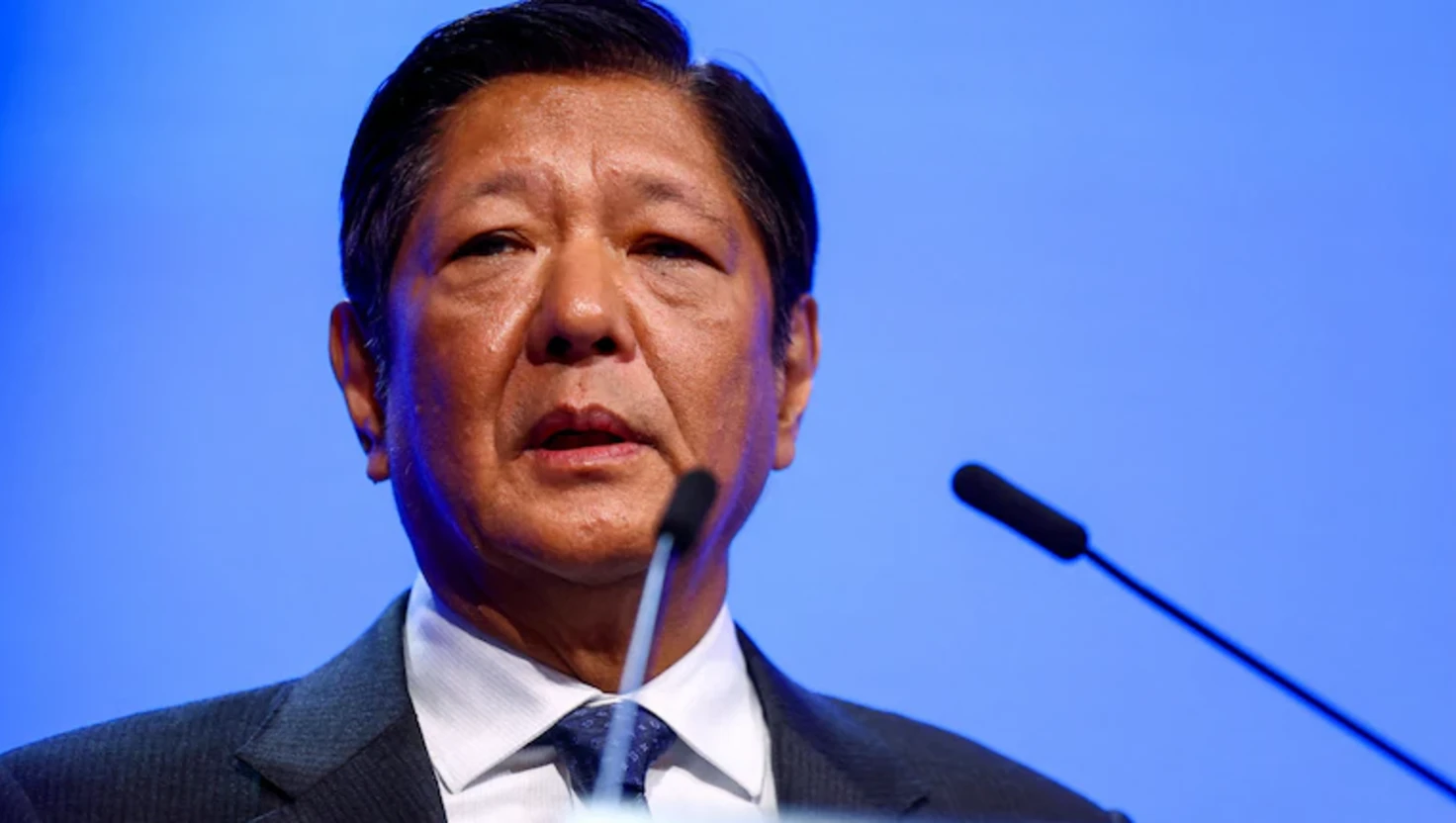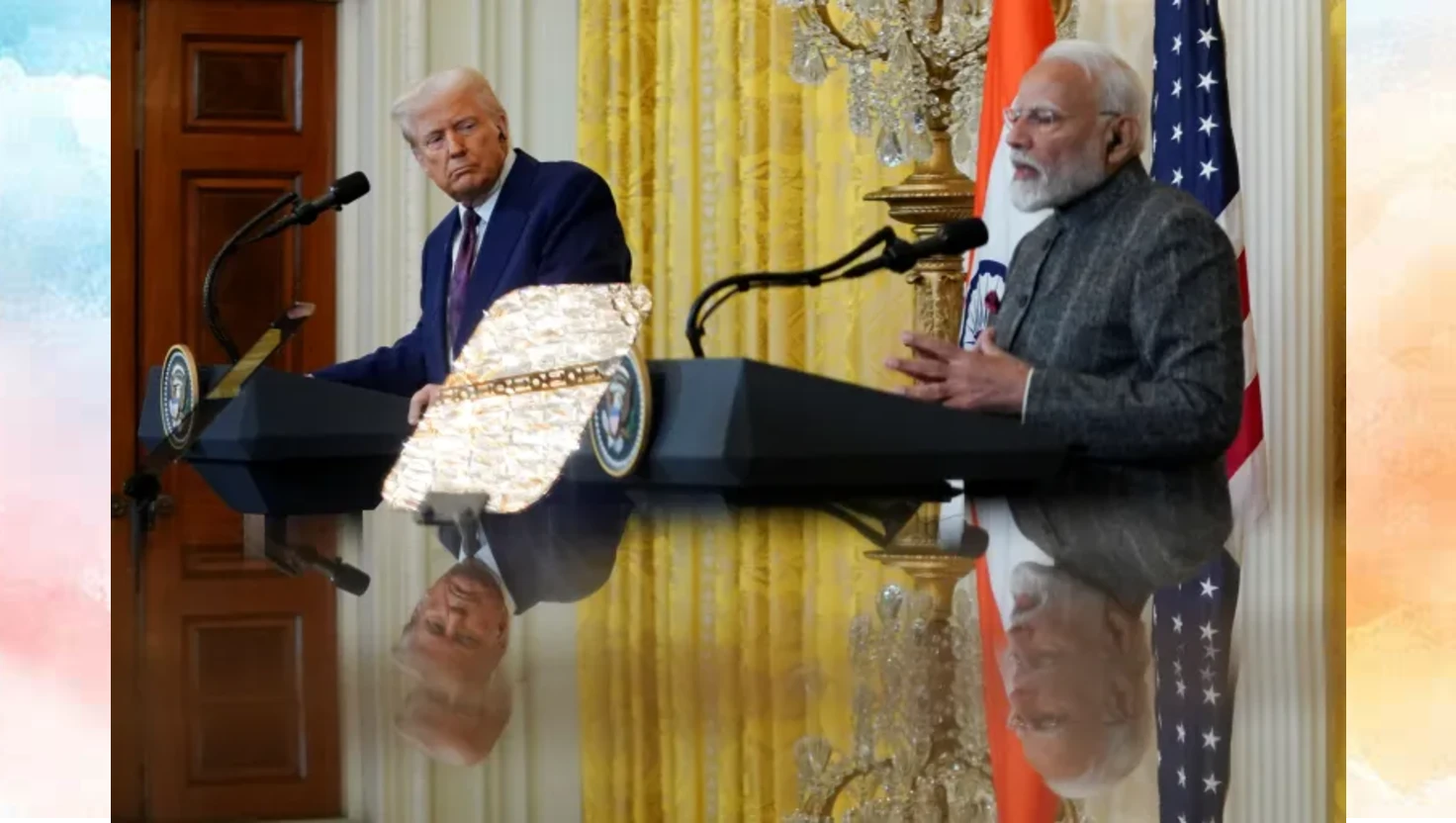Trump imposes 50% tariff on India. Warns of more secondary sanctions

Trump imposes 50% tariff on India. Warns of more secondary sanctions
India-Russia oil trade prompts highest US tariffs; Trump signals more sanctions
The US move came via an executive order issued by the White House, raising tariffs on Indian goods by an additional 25%, on top of existing duties, and triggering alarm in New Delhi over the future of bilateral trade. President Trump justified the action by pointing to India’s ongoing purchases of Russian crude oil.
“It’s only been eight hours. So let’s see what happens,” President Trump said, when asked about India's position compared to China. “You’re going to see a lot more. You’re going to see so many secondary sanctions,” he warned.
The new tariffs, which take effect on 27 August, are expected to impact key Indian export sectors including textiles, leather goods, marine products, chemicals and machinery. Certain categories—such as pharmaceuticals, energy products, and critical electronics—have been excluded from the levy.
India condemns US action as ‘unfair and unreasonable’
In a strongly worded response, India’s Ministry of External Affairs (MEA) described the US decision as "unfair, unjustified and unreasonable", asserting that its oil imports from Russia were dictated by domestic energy security needs.
“We have already made clear our position on these issues, including the fact that our imports are based on market factors and done with the overall objective of ensuring the energy security of 1.4 billion people of India,” said the MEA in an official statement.
“India will take all necessary steps to protect its national interest. The US decision is extremely unfortunate and goes against the principles of mutual respect and strategic partnership,” it added.
New Delhi has consistently defended its right to conduct energy trade with Moscow, citing sovereign policy and competitive pricing as key justifications.
Broader implications for Indian economy and trade
Trade experts in India warned that the 50% tariffs would severely hamper India’s export competitiveness in the US market, particularly against countries facing lower duties.
Ajay Sahai, Director General of the Federation of Indian Export Organisations (FIEO), called the announcement “extremely shocking” and noted it would affect “55% of India’s exports to the US”.
Economists estimate that the measure could shave up to 0.5 percentage points off India’s GDP growth for the next financial year. “If no deal is struck within the 21-day window, we may have to lower our FY26 growth forecast below 6%,” said Sakshi Gupta, Principal Economist at HDFC Bank.
India’s total exports to the United States stood at \$86.5 billion in the 2024–25 fiscal year, with key sectors including garments, jewellery, and mechanical equipment now likely to come under pressure.
Trump eyes further sanctions and China tariffs
President Trump also hinted that other countries could face similar measures, suggesting that China may be next in line for increased tariffs due to its own energy imports from Russia.
“Could happen,” he said when asked about further action on China. “We did it with India. We’re doing it probably with a couple of others. One of them could be China.”
The remarks reflect a broader effort by Washington to escalate economic pressure on Moscow and its trading partners. While India has so far resisted US calls to curtail its energy links with Russia, the threat of secondary sanctions raises new concerns about India’s future engagement in the global oil market.
Context: Strategic pressures and trade negotiations
The tariffs and sanctions threat come at a time of sensitive trade negotiations between the two countries. Washington is seeking market access for US products ranging from automobiles and dairy to genetically modified crops, while India has been pushing for exemptions and tariff reductions on its traditional exports.
Experts say Trump’s actions are aimed at influencing the terms of a proposed India-US trade agreement expected to be finalised later this year.
“It is disappointing to see additional tariffs being announced at a time when we are actively working towards resolving the earlier differences,” said Agneshwar Sen, Trade Policy Leader at EY India. “While nations have the right to address trade concerns through tariff measures, political differences are best resolved through mutual dialogue.”
Teresa John, Lead Economist at Nirmal Bank Institutional Equities, said that India may eventually agree to a phased reduction in Russian oil imports to ease tensions and secure better trade terms.
India challenges perceived double standards
Indian officials also raised concerns over perceived inconsistencies in US policy, noting that other major importers of Russian oil, including China, have not faced similar punitive actions.
“It is particularly concerning that the US has opted to levy additional tariffs on India, whilst other nations undertaking similar actions in their national interest face no such consequences,” the MEA said.
While India remains committed to engaging in diplomatic channels, officials indicated that retaliatory measures are not off the table.
Outlook uncertain as August deadline approaches
With the 21-day countdown underway before the new tariffs take effect, analysts expect heightened negotiations between Washington and New Delhi. The possibility of further US sanctions, especially secondary sanctions targeting Indian firms dealing with Russian entities, could further complicate the geopolitical landscape.
As both sides weigh their options, the coming weeks may determine the direction of India-US trade ties and New Delhi’s long-term approach to energy procurement from Russia.
“It’s only been eight hours. So let’s see what happens,” President Trump said, when asked about India's position compared to China. “You’re going to see a lot more. You’re going to see so many secondary sanctions,” he warned.
The new tariffs, which take effect on 27 August, are expected to impact key Indian export sectors including textiles, leather goods, marine products, chemicals and machinery. Certain categories—such as pharmaceuticals, energy products, and critical electronics—have been excluded from the levy.
India condemns US action as ‘unfair and unreasonable’
In a strongly worded response, India’s Ministry of External Affairs (MEA) described the US decision as "unfair, unjustified and unreasonable", asserting that its oil imports from Russia were dictated by domestic energy security needs.
“We have already made clear our position on these issues, including the fact that our imports are based on market factors and done with the overall objective of ensuring the energy security of 1.4 billion people of India,” said the MEA in an official statement.
“India will take all necessary steps to protect its national interest. The US decision is extremely unfortunate and goes against the principles of mutual respect and strategic partnership,” it added.
New Delhi has consistently defended its right to conduct energy trade with Moscow, citing sovereign policy and competitive pricing as key justifications.
Broader implications for Indian economy and trade
Trade experts in India warned that the 50% tariffs would severely hamper India’s export competitiveness in the US market, particularly against countries facing lower duties.
Ajay Sahai, Director General of the Federation of Indian Export Organisations (FIEO), called the announcement “extremely shocking” and noted it would affect “55% of India’s exports to the US”.
Economists estimate that the measure could shave up to 0.5 percentage points off India’s GDP growth for the next financial year. “If no deal is struck within the 21-day window, we may have to lower our FY26 growth forecast below 6%,” said Sakshi Gupta, Principal Economist at HDFC Bank.
India’s total exports to the United States stood at \$86.5 billion in the 2024–25 fiscal year, with key sectors including garments, jewellery, and mechanical equipment now likely to come under pressure.
Trump eyes further sanctions and China tariffs
President Trump also hinted that other countries could face similar measures, suggesting that China may be next in line for increased tariffs due to its own energy imports from Russia.
“Could happen,” he said when asked about further action on China. “We did it with India. We’re doing it probably with a couple of others. One of them could be China.”
The remarks reflect a broader effort by Washington to escalate economic pressure on Moscow and its trading partners. While India has so far resisted US calls to curtail its energy links with Russia, the threat of secondary sanctions raises new concerns about India’s future engagement in the global oil market.
Context: Strategic pressures and trade negotiations
The tariffs and sanctions threat come at a time of sensitive trade negotiations between the two countries. Washington is seeking market access for US products ranging from automobiles and dairy to genetically modified crops, while India has been pushing for exemptions and tariff reductions on its traditional exports.
Experts say Trump’s actions are aimed at influencing the terms of a proposed India-US trade agreement expected to be finalised later this year.
“It is disappointing to see additional tariffs being announced at a time when we are actively working towards resolving the earlier differences,” said Agneshwar Sen, Trade Policy Leader at EY India. “While nations have the right to address trade concerns through tariff measures, political differences are best resolved through mutual dialogue.”
Teresa John, Lead Economist at Nirmal Bank Institutional Equities, said that India may eventually agree to a phased reduction in Russian oil imports to ease tensions and secure better trade terms.
India challenges perceived double standards
Indian officials also raised concerns over perceived inconsistencies in US policy, noting that other major importers of Russian oil, including China, have not faced similar punitive actions.
“It is particularly concerning that the US has opted to levy additional tariffs on India, whilst other nations undertaking similar actions in their national interest face no such consequences,” the MEA said.
While India remains committed to engaging in diplomatic channels, officials indicated that retaliatory measures are not off the table.
Outlook uncertain as August deadline approaches
With the 21-day countdown underway before the new tariffs take effect, analysts expect heightened negotiations between Washington and New Delhi. The possibility of further US sanctions, especially secondary sanctions targeting Indian firms dealing with Russian entities, could further complicate the geopolitical landscape.
As both sides weigh their options, the coming weeks may determine the direction of India-US trade ties and New Delhi’s long-term approach to energy procurement from Russia.

Over 60 missing in Uttarakhand flash floods disaster
Uttarkashi floods have caused multiple casualties and left dozens missing as rescue efforts continue. Government seeks aerial support amid challenges.
| 2025-08-06

India's Niti Aayog Proposes National EV Policy for 30% Sales by 2030
Niti Aayog calls for a national electric vehicle policy as India aims for 30% EV sales share by 2030, highlighting significant challenges ahead.
| 2025-08-05

Philippine President Ferdinand Marcos Jr. Visits India for Talks
Philippines President Ferdinand Marcos Jr. embarks on a five-day visit to India to enhance bilateral relations and discuss cooperation across multiple sectors.
| 2025-08-05

Trump says he will ‘substantially’ raise tariffs on India over Russian oil buys
Donald Trump announces plans to raise tariffs on India in response to its purchases of Russian oil, prompting a strong reaction from New Delhi.
| 2025-08-05

Leptin Could Revolutionise Treatment for Type 1 Diabetes
A UW study suggests leptin may offer new treatments for Type 1 diabetes, challenging long-held views on diabetic ketoacidosis.
| 2025-08-05




